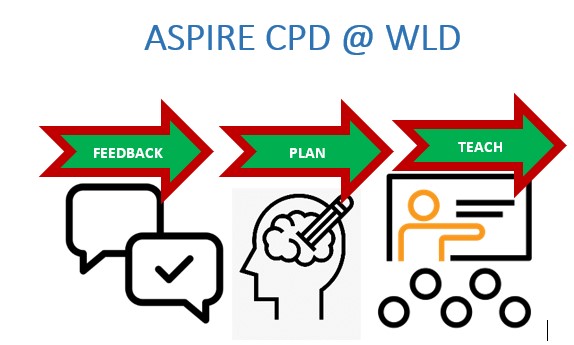23 January 2022

|
Whole School CPD Focus: |
Purposeful Writing |
|
Walkthru Cluster: |
Explaining and Modelling
|
|
Reflection:
Last week, looking at Dual Coding, we explored the significance of students understanding the schema. In his MARGE model, Shimamura suggests that it can help students if teachers front-load the process of organising information in the way that ideas are produced. The ‘R’ of the MARGE model – Relate – is illustrating how ideas are connected. This metacognitive process allows students to understand and connect central ideas; that specific ideas form part of a bigger picture and that we can categorise ideas and connect them at various levels of depth etc. Ideas can then be compared or contrasted to deepen our understanding.
Over the course of the last term, at Middle Leader level, discussions have been taking place regarding component and composite assessment. It is clear that this relates clearly to this Walkthru.
So, how can we embed this Walkthru into our practice?
Stage One: Set Out the Big Picture Sherrington suggests presenting a broad overview of the topic, highlighting the main and sub-categories. This could be:
Stage Two: Zoom In – Orientate At this point, Sherrington suggests focusing on a specific element of the big picture or overview, constantly making connection to this big picture. Being very explicit is important here. So:
The aim of this stage is for students to see where the knowledge in hand belongs in relation to other knowledge. Students are starting to develop a knowledge web or a schema.
Stage Three – Zoom In and Zoom Out Step by Step Depending on whether you start big or small, Sherrington suggests that it is important to continually connect the knowledge to a bigger frame and back again. Again:
Stage Four – Rehearse and Check for Understanding It is important to explore the links explicitly yourself and then to ensure that students can make these links independently. At this point, Check for Understanding routines come into play. You may also use Think Pair Share so that students are able to make zoom in/zoom out connections themselves.
Stage Five – Use the Zoom In/Zoom Out Process Routinely In any learning process, Sherrington suggests that the teacher has to build into the routine consciously looking at layers of detail within the wider frame. This helps to organise information to form sound schema and to make connections as new knowledge is encountered and it also helps with retrieval later on. Using visual displays such as timelines and number lines help here as you can refer to them easily and repeatedly.
So as we consider composite assessments (which requires consideration of threshold concepts and knowledge, too) as part of our SIG Assessment working party, it may be worth explicitly mapping out the schema for certain topics as a department. In mapping out the bigger picture and the sub-categories, we are securing our own understanding, making this consistent across the department and making it explicit for students. This would be time well spent.
|
|
|
CPD Cascade |
Please complete one of the two CPD modules by the end of January (JHA)Sexual Harassment and Gender StereotypingFree online training to tackle sexual harassment, language and gender stereotyping. https://training.ukfeminista.org.uk/
Understanding the New DfE Report on Sexual Violence and Sexual Harassment Between Children in Schools and Colleges 2021https://thenationalcollege.co.uk/hub/view/webinar/understanding-the-new-dfe-guidance-on-sexual-violence-and-sexual-harassment-between-children-in-schools-and-colleges-2021
National CollegeRemember that there are subject-specific watchlists available in National College.
|
Posted by James Harris
Category: Teaching and Learning Digests
